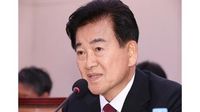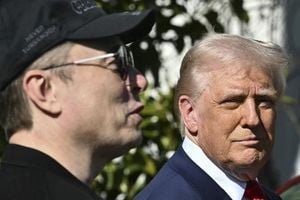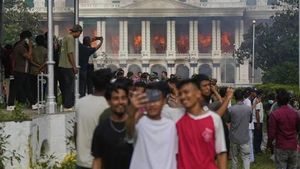On October 15, 2025, South Korea unveiled a significant shift in its approach to relations with North Korea, signaling a new era of engagement—and, perhaps, a new set of challenges. At the heart of this move is the adoption of what officials are calling the “two-nation peace framework,” a policy direction that, for now, aims to institutionalize peaceful coexistence between the two Koreas, even as the long-term goal of reunification remains officially unchanged.
The announcement came from Chung Dong Young, South Korea’s Minister of Unification, during a plenary session of the National Assembly. According to reports from ANTV, Chung stated, “Institutionalizing a peaceful coexistence state is part of President Lee Jae Myung’s philosophy,” emphasizing that the new framework is a temporary measure within the context of the peninsula’s special relationship and its orientation toward eventual reunification. This nuanced stance reflects both a pragmatic response to the current geopolitical climate and a philosophical commitment to stability on the Korean peninsula.
But what does the “two-nation peace framework” actually mean in practice? For starters, it signals a willingness by Seoul to treat North and South Korea as two sovereign entities coexisting peacefully, at least for the time being. The Ministry of Unification made clear that its immediate goal is to sign a basic inter-Korean agreement, which would require mutual recognition between the two governments—a step that, while logical from a diplomatic standpoint, is fraught with constitutional and political sensitivities in South Korea, where the constitution enshrines peaceful reunification as a national objective.
To support this new direction, the Ministry announced a sweeping restructuring plan. Among the headline initiatives is the restoration of the Kaesong Industrial Complex Fund, a move designed to prepare for the eventual resumption of economic cooperation at the once-thriving industrial park just north of the Demilitarized Zone. The Kaesong Industrial Complex, which has long symbolized inter-Korean cooperation, was shuttered in 2016 amid rising tensions and international sanctions. Its revival, even at the planning stage, is seen by many as a hopeful sign—but also a potential flashpoint, given ongoing concerns about United Nations sanctions and the use of North Korean labor.
In addition to the Kaesong Fund, the Ministry plans to establish a new Peace and Cooperation Promotion Group and to re-establish several inter-Korean dialogue units that had previously been disbanded. The restructuring will also see the Ministry’s total personnel increase from 533 to 600, a clear indication of the scale and seriousness of the new policy direction.
Yet for all the boldness of these plans, formidable obstacles remain. Chief among them is the silence from Pyongyang. As of mid-October, North Korea had not responded to South Korea’s proposal for renewed dialogue, casting a shadow over hopes for a quick breakthrough. According to ANTV, the lack of response is a “major obstacle” to the plan’s implementation. Moreover, the prospect of resuming operations at the Kaesong Industrial Complex raises tricky legal and diplomatic questions: re-employing North Korean workers could potentially run afoul of existing United Nations sanctions, which were imposed in response to North Korea’s nuclear and missile programs.
Minister Chung Dong Young did not shy away from these complexities in his remarks to lawmakers. He was careful to frame the “two-nation peace framework” as a temporary and pragmatic step, not a permanent abandonment of the ultimate goal of reunification. “This framework is temporary in the special relationship oriented towards reunification,” Chung said, underlining the delicate balancing act the government is attempting to perform.
The policy shift has already sparked debate within South Korea. Some see it as a practical response to the current diplomatic stalemate, while others worry it could undermine the constitutional commitment to reunification or send the wrong message to both North Korea and the international community. The issue of mutual recognition, in particular, is likely to be contentious. While it could pave the way for more stable relations and pragmatic cooperation, it also raises questions about the long-term implications for national identity and constitutional law.
Meanwhile, the restoration of the Kaesong Industrial Complex Fund is being watched closely by both supporters and critics of engagement. The industrial park, which once employed tens of thousands of North Korean workers and provided a rare venue for inter-Korean economic collaboration, has long been seen as a barometer of the broader relationship. Its closure in 2016 was a low point, and its potential reopening is laden with both hope and risk. The Ministry’s plan to restore the fund is intended to lay the groundwork for a possible resumption of operations, but any actual restart would require not only North Korean cooperation but also careful navigation of international sanctions and domestic political opinion.
The Ministry’s restructuring plan goes beyond just Kaesong. By establishing a Peace and Cooperation Promotion Group and reviving previously disbanded dialogue units, Seoul is signaling its commitment to a comprehensive approach to inter-Korean relations. The increase in personnel—from 533 to 600—reflects the scale of the challenge and the government’s determination to pursue engagement, even in the face of uncertainty.
Yet, as many observers have noted, the success of these initiatives will depend largely on North Korea’s willingness to engage. So far, Pyongyang’s silence has been deafening. Without a positive response, even the best-laid plans in Seoul may struggle to gain traction. The specter of United Nations sanctions further complicates matters, especially if renewed economic cooperation is seen as violating international agreements.
For President Lee Jae Myung and his administration, the “two-nation peace framework” represents both a philosophical commitment to peaceful coexistence and a pragmatic adjustment to the realities of inter-Korean relations in 2025. Whether this approach will yield tangible progress—or merely mark another chapter in the long, often frustrating saga of North-South relations—remains to be seen. But for now, Seoul has made its move, and the world is watching to see how Pyongyang will respond.
As the dust settles from this week’s announcements, one thing is clear: South Korea’s new policy direction is bold, controversial, and fraught with both promise and peril. The coming months will reveal whether the “two-nation peace framework” can serve as a stepping stone to lasting peace—or whether it will become just another footnote in the complex history of the Korean peninsula.




